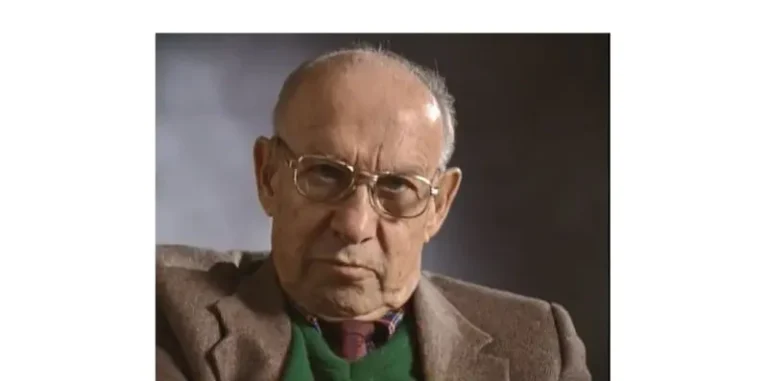4 Lessons on Openers from 2023 Pulitzer Prize winners
What’s the purpose of the first sentence? To make sure you get to the second.
“Come with me. I want to show you what a hole in Alabama history looks like.”
That’s how Kyle Whitmire of AL.com began a Pulitzer Prize-winning column last year about a picturesque town that has buried its history of a race massacre.
We’re avid readers because it’s a way to learn, especially from writers we admire. The writing of Pulitzer-winners in journalism sometimes is overshadowed by the reporting, which is understandable but still a shame. There’s an old newsroom saying that applies to these deeply investigated and researched stories: “It’s all in the telling.”
A good lede or opener should give readers a running head start. Sometimes it’s a short sentence, although such ledes are usually in short supply among Pulitzer winners. Other times it’s an anecdote that pulls in readers.
Here’s four lessons about ledes from this year’s prize winners. We’re quoting the stories to give you the full flavor of the writing and to save you from switching between webpages.
1. Direct address
“Ambushed in Eufaula: Alabama’s forgotten race massacre”
Kyle Whitmire
AL.com
Jan. 16, 2022
Come with me. I want to show you what a hole in Alabama history looks like.
Downtown Eufaula is postcard pretty. It fits the Hollywood idea of what a small Southern town is supposed to look like, so much so that the producers of that “Sweet Home Alabama” movie took some footage here years ago, although they shot the scenes with Reese Witherspoon across the river, in Georgia.
It’s not until the seventh paragraph when the column takes a turn: “Today we’re going back to an old South, but not that one.”
Whitmire’s column was part of a series about the state’s pattern of willful blindness to its past. Whitmire this month won a Pulitzer Prize for commentary. The direct address lede is often used when the topic is personal to the reader: weight loss, 401(k) advice or an iPhone upgrade. With this lede Whitmire not only makes the subject personal, but he also takes on the role of guide, a timeless character in literature.
He then employs a metaphor that sets the tone, as if we’re about to casually look down with him to see what’s missing.
2. The Big Picture
“Federal Officials Trade Stock in Companies Their Agencies Oversee”
The Wall Street Journal
Oct. 11, 2022
This story was part of a package that won a Pulitzer Prize for investigative reporting. Here’s how the staff started the first installment:
Thousands of officials across the government’s executive branch reported owning or trading stocks that stood to rise or fall with decisions their agencies made, a Wall Street Journal investigation has found.
More than 2,600 officials at agencies from the Commerce Department to the Treasury Department, during both Republican and Democratic administrations, disclosed stock investments in companies while those same companies were lobbying their agencies for favorable policies. That amounts to more than one in five senior federal employees across 50 federal agencies reviewed by the Journal.
A top official at the Environmental Protection Agency reported purchases of oil and gas stocks. The Food and Drug Administration improperly let an official own dozens of food and drug stocks on its no-buy list. A Defense Department official bought stock in a defense company five times before it won new business from the Pentagon.
The story goes on to cite nine examples of officials’ stock trades, but none of them are prominent enough to make it into the lede. Without that element, the 31-word lede focuses on the scope of the problem. Consider how “thousands” in the lede is simpler than the more exact figure in the second paragraph, which also adds this context: one in five senior employees.
3. Spin Forward
“Racist remarks in leaked audio of L.A. council members spark outrage”
Staff
Los Angeles Times
Oct. 9, 2022
The newspaper was cited for breaking news reporting for its initial report and coverage of the resulting turmoil. Here’s the lede to the first story under the label L.A. Council racist comments:
Behind closed doors, Los Angeles City Council President Nury Martinez made openly racist remarks, derided some of her council colleagues and spoke in unusually crass terms about how the city should be carved up politically.
The conversation remained private for nearly a year, until a leaked recording reverberated explosively Sunday and turned the focus of a sprawling metropolis toward Los Angeles City Hall.
By Sunday evening, three of Martinez’s council colleagues had called for her to resign.
In three sentences, the story goes from the news, how we got here, the immediate reaction and then to what might happen next.
To win readers’ attention, you must clearly explain why they should care about the news, even if it seems obvious to you. This is such a big story that the temptation would have been to jump into the news: who said what. If readers need a reason to care, then everybody’s talking about it and a top official could step down. (Martinez resigned three days later.)
4. The discovery
“We need to take away children: The secret history of the U.S. government’s family-separation policy”
Caitlin Dickerson
The Atlantic
Aug. 7, 2022
Caitlin Dickerson was recognized for explanatory reporting for her account of the policy that separated migrant children from their parents. Here’s the lede to her report.
As a therapist for children who are being processed through the American immigration system, Cynthia Quintana has a routine that she repeats each time she meets a new patient in her office in Grand Rapids, Michigan: She calls the parents or closest relatives to let them know the child is safe and well cared for, and provides 24-hour contact information.
This process usually plays out within hours of when the children arrive. Most are teens who have memorized or written down their relatives’ phone numbers in notebooks they carried with them across the border. By the time of that initial call, their families are typically worried, waiting anxiously for news after having—in an act of desperation—sent their children into another country alone in pursuit of safety and the hope of a future.
But in the summer of 2017, Quintana encountered a curious case. A 3-year-old Guatemalan boy with a toothy smile and bowl-cut black hair sat down at her desk. He was far too little to have made the journey on his own. He had no phone numbers with him, and when she asked where he was headed or whom he’d been with, the boy stared back blankly. Quintana scoured his file for more information but found nothing. She asked for help from an Immigration and Customs Enforcement officer, who came back several days later with something unusual: information indicating that the boy’s father was in federal custody.
To tell a story you must master the chronology, but then break it into parts. You usually won’t start at the beginning; you’ll start in the middle of things, but where?
In a story about the separation of migrant children from their families, Dickinson begins with a description of a sympathetic figure’s role in a small step in the process.
But then comes the twist, the discovery of something unusual. Not an obvious wrong, but a matter for investigation. The third paragraph is rich with details that focus readers’ sympathy from the therapist to the small child.
The unstated question posed by this opening: How did this child get here? It takes 30,000 words to answer.
Inspiring Ledes
Writing a good lede or opener is like a saying often attributed to two famous Chicagoans: Al Capone and Mayor Richard J. Daley. “Vote early and often.”
When you have an idea for a story, it’s helpful to take a stab at a headline and lede before you start reporting in earnest. It focuses your attention and gives you a thesis. They’ll probably change as you report, but it gives you time to mull them over.
One formula for writing ledes is first to identify the traditional elements of reporting: Who, what, when, where, why and how? Then make choices. That selection process is evident in the second and third examples, which hook the readers with news. But that’s not the only way.
Tom Corfman is a senior consultant with Ragan Consulting Group. He changed the lede to this story three times until he read Kyle Whitmire’s column. Then he tweaked it twice more.
Contact our client team to learn more about how we can help you with your communications. Follow RCG on LinkedIn and subscribe to our weekly newsletter here.







